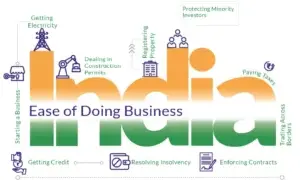Floods in Jammu and Kashmir (J&K) have evolved from episodic disasters into a recurring pattern that disrupts lives, destroys infrastructure, and stalls economic activity across the Union Territory. The Valley—once buffered by a network of wetlands, lakes, and braided rivers—has become increasingly exposed due to a dangerous combination: a fragile Himalayan geography stressed by climate change, and human actions that have narrowed rivers, choked drains, and put concrete where marshes once soaked up stormwater. The outcome is predictable—seasonal rains now tip more easily into emergencies.
This article unpacks the natural and human-made drivers of Kashmir’s flood risk, recounts the social and economic consequences, diagnoses the governance failures that keep repeating, and lays out a time-bound, practical roadmap for resilience.
1) NATURE’S HAND: WHY GEOGRAPHY AND CLIMATE PUT J&K ON EDGE
- a) The Bowl-Shaped Valley
The Kashmir Valley is often described as a saucer or bowl surrounded by mountain walls. This geography matters. During periods of intense precipitation or rapid snowmelt, water finds limited escape routes. Rivers like the Jhelum and its tributaries—Lidder, Vishow, Sindh, and others—meander through flat alluvial plains before draining downstream. When inflows spike, the “bowl” fills quickly, especially if channels are constricted or drains are clogged.
- b) Western Disturbances and Extreme Rainfall
Kashmir’s rains are strongly influenced by Western Disturbances—moist systems from the Mediterranean that can cluster over the Himalayas. When these systems stall or coincide with monsoon incursions, they can deliver heavy, short-duration downpours. Cloudbursts in hilly catchments then funnel torrents into narrow valleys, triggering flash floods and landslides. Short, intense rainfall also overwhelms urban drainage, particularly where low-lying marshes have been paved over.
- c) Snowpack, Glaciers, and Climate Change
Warming trends in high mountain Asia are altering snowfall, snowmelt timing, and glacier mass balance. Earlier or more rapid melt can coincide with rain-on-snow events, increasing river discharge at the worst moments. While debates continue about precise long-term trends for each basin, lived experience in Kashmir is clear: weather extremes feel sharper, rain comes harder, and rivers respond faster than they once did.
- d) Erodible Slopes and Sediment Loads
The Himalayas are young, rising mountains with fragile slopes. Landslides and erosion are common, especially where forests are thinned or hill roads are carved without adequate drainage and slope stabilization. Sediment delivered into rivers raises beds and reduces carrying capacity—unless channels are regularly dredged and protected from fresh encroachments.
Nature loads the dice; human choices decide how often they come up snake eyes.
2) THE HUMAN FACTOR: HOW WE TURN HIGH WATER INTO DISASTER
- a) Encroachment on Floodplains and River Margins
Srinagar’s traditional floodplain along the Jhelum once acted as a safety valve. Over decades, unplanned construction has narrowed the river’s breathing space. Setback norms were ignored; embankments were weakened by ad-hoc works; and the space that rivers require during high flows was surrendered to real estate. The result: when the Jhelum swells, water has nowhere to spread safely, so it surges through neighborhoods.
- b) Wetlands Lost, Sponges Removed
Wetlands such as Hokersar, Wular’s peripheral marshes, and Brari Nambal historically absorbed peak flows, stored water, and released it slowly. These “natural retarding basins” have been reduced by infilling, siltation, and encroachment, trading ecosystem services for short-term land gains. Every hectare of wetland lost is storage capacity gone—capacity that can be the difference between high water and a flood.
- c) Neglect of the Flood Spill Channel
The Flood Spill Channel (FSC) was built to siphon excess water from the Jhelum during high discharge and to reduce the load on the river through Srinagar. Years of siltation, vegetation growth, and unauthorized constructions have crippled its function. Similarly, key control structures like the Chatabal Weir need consistent upkeep and modern upgrades to effectively regulate flows. Without these, the system meant to protect the city becomes a bottleneck.
- d) Unplanned Urbanization and Poor Drainage
Rapid urban growth, particularly on low-lying former marshland, has outpaced drainage capacity. Stormwater networks are incomplete or poorly maintained; outfalls are undersized or blocked; and solid waste often ends up in nallahs and wetlands. Even moderate rains now produce knee-deep waterlogging, a warning siren for what intense storms can do.
- e) Deforestation, Quarrying, and Riverbed Mining
Deforestation in catchments accelerates runoff, while poorly regulated sand and gravel mining destabilizes riverbeds and erodes banks. Hill roads built without proper cross-drainage concentrate flows in damaging ways. Together these practices increase peak discharges and the destructive power of floods.
- f) Solid Waste and Construction Debris
Garbage and debris choke culverts and storm drains. Silt traps are rare; routine desilting is sporadic; and enforcement against illegal dumping is weak. A single blocked choke point can drown entire localities.
3) IT’S NOT JUST THE VALLEY: REGION-WIDE EXPOSURE
Flood risk spans the UT. The Jammu region experiences intense monsoon bursts that can turn streams into torrents within hours, hitting districts along the Tawi and Chenab and their tributaries. Mountain districts face a double hazard: flash floods in narrow valleys and rainfall-triggered landslides that sever mobility and isolate communities. This is not an isolated Srinagar problem; it is a system-wide challenge demanding basin-scale solutions.
4) WHAT FLOODS COST: PEOPLE, ECONOMY, AND SYSTEMS
- a) Human Loss and Trauma
Lives are lost, families displaced, and communities endure months of disruption. Memories of the September 2014 deluge remain vivid: inundated neighborhoods, stranded residents, and a response system stretched thin. Beyond the immediate physical toll, there is long-term psychological stress—especially for children and the elderly—whenever rain intensifies.
- b) Economic Damage and Livelihoods
Agriculture, horticulture, and fisheries absorb repeated shocks. Paddy fields, orchards, and vegetable belts can be submerged at crucial stages, wiping out incomes and tightening household budgets for months. Trade and tourism—core pillars of the regional economy—slow dramatically during and after floods, with knock-on effects on transport, hospitality, and retail.
- c) Infrastructure Collapse and Public Services
Roads, bridges, and culverts fail under scouring flows; hospitals and schools go offline; power and communications falter. Repair bills reach into thousands of crores, and emergency works often replace durable planning, creating a treadmill of reactive spending rather than investments that reduce risk over time.
5) GOVERANCE GAPS: WHY THE SAME MISTAKES REPEAT
- a) Fragmented Responsibilities
Multiple agencies share pieces of flood management—irrigation and flood control, urban development, municipal bodies, environment, disaster management, and police. Without a strong lead institution and integrated basin-level planning, responsibilities blur and accountability thins.
- b) Plans Without Implementation
Master plans may mention floodplains, wetlands, and no-build zones, but enforcement is patchy. Projects such as systematic dredging, FSC rehabilitation, and embankment strengthening often stall due to funding gaps, land issues, tender delays, or shifting priorities.
- c) Data, Forecasting, and Early Warning
Flood forecasting requires dense hydromet networks, real-time telemetry, and models that convert rainfall into actionable river stage predictions. While progress has been made in places, coverage is uneven, data sharing is slow, and warnings can be too generic or too late for hyper-local decision-making.
- d) Maintenance Culture
Critical assets—gates, weirs, pumps, culverts, and drains—demand routine maintenance. Yet budgets prioritize new capital works over operations and maintenance. The result: impressive assets that degrade silently until the next storm exposes their weaknesses.
- e) Regulatory Weakness
Encroachments proceed because penalties are light and prosecutions rare. Floodplain zoning is seldom sacrosanct; “temporary” structures become permanent; and political pressure to regularize violations undermines deterrence. In such an environment, even the best technical plans fail on the ground.
6) LESSONS FROM 2014 (AND AFTER)
The 2014 floods were a watershed moment that laid bare structural vulnerabilities—insufficient river conveyance, reduced wetland buffers, dysfunctional spill channels, weak building controls in flood-prone areas, and limited early warning. The aftermath saw new committees, reports, and promises. Some desilting and embankment repairs did occur, but transformative change—wetland restoration at scale, full FSC revival, strict floodplain protection, and modernized forecasting—has been halting. Each subsequent monsoon season or Western Disturbance now tests a system that remains only partially strengthened.
7) THE WAY FORWARD: FROM RELIEF TO RESILIENCE
What would a practical, time-bound resilience agenda look like? Three horizons—immediate (0–6 months), near-term (6–24 months), and medium-term (2–5 years)—can guide action, backed by clear institutional accountability.
Horizon I: 0–6 Months — Reduce Immediate Risk
- Unclog the System:
Intensive desilting of priority Jhelum stretches; emergency dredging at known choke points.
Round-the-clock clearing of storm drains, nallahs, culverts; deploy silt traps at key outfalls.
Remove floating debris and invasive vegetation from channels before the next high-rainfall window.
- Enforce No-Go Zones (Starting Now):
Immediate moratorium on fresh construction within notified floodplains and wetland buffers.
Visible, well-policed demolition of new encroachments to signal zero tolerance.
- Early Warning and Preparedness:
Expand field-level rain and river gauges in hotspots; enable real-time dashboards in control rooms.
Ward-level flood volunteers trained in evacuation, first aid, and relief distribution.
Pre-position pumps, sandbags, emergency lighting, inflatable boats, and medical kits in mapped low-lying pockets.
- Critical Asset Checks:
Inspect and service gates, weirs, pumps, and backup power at flood control stations.
Trial-run urban pumping stations under simulated high-inflow conditions.
Horizon II: 6–24 Months — Restore Buffers, Rebuild Capacity
- Revive the Flood Spill Channel (FSC):
Complete de-siltation to design bed levels; remove encroachments; rehabilitate embankments.
Upgrade control structures and outfalls; add fish-friendly features where feasible to balance ecology and safety.
- Wetland Restoration at Scale:
Demarcate legal boundaries; acquire or swap high-value parcels where needed to restore original extents.
Reconnect wetlands to their feeder channels; create retention basins and seasonal storage zones.
Establish community stewardship with incentives for conservation.
- Urban Drainage Masterplans (Srinagar + Secondary Towns):
Hydrodynamic modeling to size drains for current and future rainfall intensities.
Retrofit outfalls with flap gates and silt traps; create detention parks and rain gardens.
Mandate on-site stormwater management (permeable pavements, rooftop harvesting, soak pits) for large developments.
- Catchment Treatment and Slope Stabilization:
Reforest degraded slopes; construct check dams and contour trenches upstream of flood-prone towns.
Enforce regulated, science-based riverbed mining with closed seasons and no-go stretches.
- Institutional Strengthening:
Establish a Basin-Level Flood and Wetland Authority with teeth: unified planning, fast-track approvals, and enforcement powers.
Build a modern Hydromet & Forecasting Cell integrating IMD, CWC-style river data, remote sensing, and municipal sensors for street-level alerts.
Horizon III: 2–5 Years — Lock in Long-Term Resilience
- Floodplain Zoning as Non-Negotiable Law:
Notify risk zones (High/Moderate/Low) with differential building controls and insurance premiums.
Introduce Transferable Development Rights (TDR) to shift growth away from high-risk areas without eroding economic value.
- Nature-Based Solutions (NbS):
Create seasonal flood meadows that safely inundate during peaks and serve as parks in the dry season.
Re-naturalize select river stretches with setback embankments, widened berms, and riparian vegetation to dissipate energy.
- Resilient Infrastructure Standards:
Elevate critical facilities (hospitals, power substations, data centers) above design flood levels; waterproof basements; install backflow preventers.
Make “maintainability” a funded line item: annual O&M budgets, performance-based maintenance contracts, and third-party audits.
- Risk Financing and Insurance:
Pilot micro-insurance for low-income households; catastrophe risk pools for municipal assets.
Tie state and municipal borrowing rates to resilience metrics—better risk management, cheaper finance.
- Education, Drills, and Culture of Preparedness:
Annual school and neighborhood flood drills; public signage for evacuation routes; multilingual alert systems.
Community-managed rain gauges and local response teams to bridge the “last mile” in warnings.
8) Who Pays, Who Delivers: Making Accountability Real
Funding the Transition
Rebalance Budgets: Shift from post-disaster relief to pre-disaster mitigation; ring-fence a resilience fund.
Leverage External Finance: Multilateral climate and disaster funds, green bonds, and results-based grants can back wetland restoration, hydromet systems, and resilient infrastructure.
Private Co-Investment: Require large developments to fund on-site detention, permeable surfaces, and neighborhood drainage upgrades.
Clear Lines of Responsibility
Lead Agency: A single empowered authority for the Jhelum-FSC-Wetlands system to plan, execute, and enforce.
Time-Bound Targets: Public dashboards showing FSC kilometers restored, wetland hectares reclaimed, drains desilted, and encroachments removed—updated monthly.
Independent Oversight: University and civil society partners to audit progress and publish easy-to-read “resilience scorecards.”
9) A PEOPLE-CENTERED APPROACH
Flood management succeeds when communities are partners, not afterthoughts. Residents know where water collects first and which culverts block most often. Their participation in mapping, monitoring, and maintenance amplifies official capacity.
Citizen Reporting: Simple apps or helplines for drain blockages, illegal dumping, or new encroachments—linked to time-bound civic responses.
Livelihood Links: Wetland restoration can create local jobs—planting, guarding, desilting, eco-tourism—aligning conservation with household income.
Public Health Integration: Post-flood sanitation, vector control, safe water supply, and mental health support must be embedded in the disaster playbook, not improvised.
10) CONCLUSION: FROM CALAMITY CYCLES TO A RESILIENT FUTURE
Kashmir’s growing flood vulnerability is not destiny. Geography sets the stage, and climate change raises the stakes, but it is human decision-making—encroachment on floodplains, loss of wetlands, neglected flood channels, and weak enforcement—that turns heavy rain into disaster. The solutions are not mysterious: restore natural buffers; enforce floodplain law; rehabilitate the Flood Spill Channel; modernize drainage, forecasting, and emergency response; and build a culture of routine maintenance and public accountability.
The choice is between paying predictably now for prevention or paying repeatedly later for recovery—and risking lives each time the skies open. With science-driven planning, tough but fair enforcement, and inclusive participation, Jammu and Kashmir can convert its water from a seasonal threat back into the lifeline it has always been.
(The author is a freelance writer, national TV debater, and columnist. Views are personal. He can be reached at ahmadayaz08@gmail.com.)





